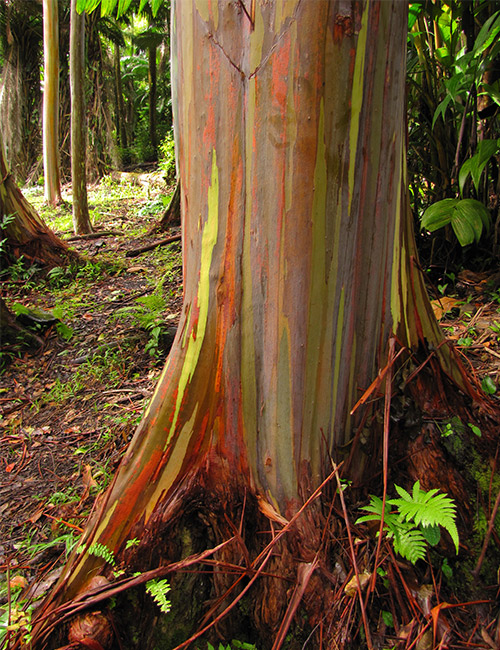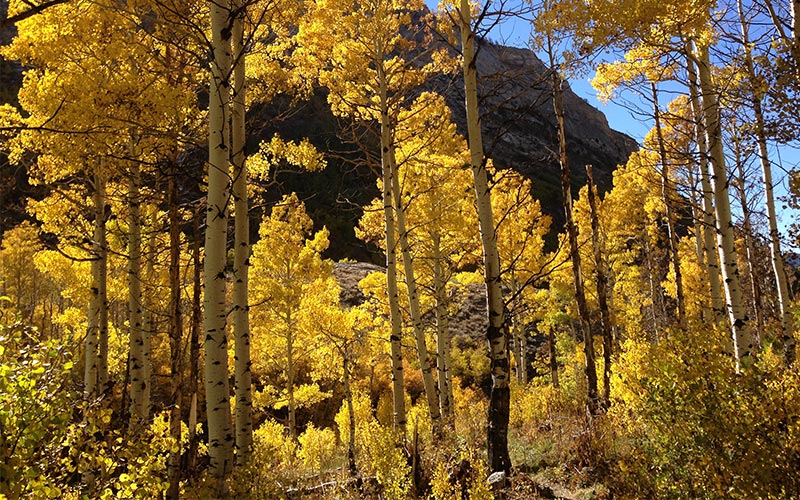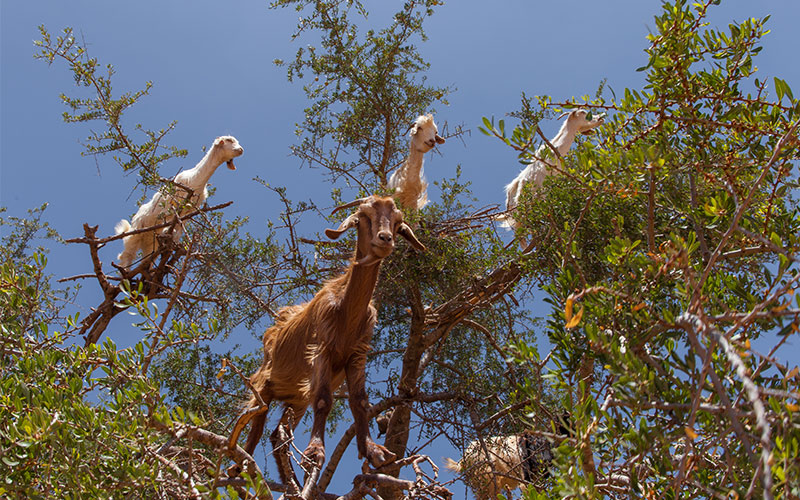By Allie Wisniewski, American Forests
It’s no secret that nature is responsible for the majority of mind-blowing phenomena known to man. These four, however, are unique to forest ecosystems. Prepare to be amazed.
Crown Shyness

Crown shyness, also known as canopy shyness, is observed in trees of the same species and is a particularly adorable phenomenon, in which the trees’ crowns don’t quite touch each other, forming a canopy with snaking gaps. Why does this happen, exactly? Many hypotheses have been made, but some research suggests that it’s an adaptive behavior that might help limit the spread of leaf-eating insect larvae. Lodgepole pines and black mangroves are just a couple of the species you might find displaying crown shyness. Hey, some of us are introverts. It’s nothing to be ashamed of.
The Rainbow Eucalyptus

Upon first laying eyes on this tree, I was hesitant to believe it actually existed. After a bit of research, however, I discovered that it was not, in fact, an impressive Photoshop job, but a species called Eucalyptus deglupta. The unbelievably colorful tree is known for its multi-hued bark, sections of which shed at different times every year, revealing a bright green inner bark, which then changes colors from blue to purple to orange and then maroon. Although the species is planted regularly in many areas of the northern hemisphere, the unique colors of the rainbow eucalyptus are most vibrant when found inside its native range, which includes most tropical forests south of the equator.
Pando Aspen Grove

While this, at first glance, might look like just your average grove of aspens, it’s actually considered a single living organism. Huh? Yes, this grove of approximately 47,000 trees is classified as a clonal colony, each tree consisting of the same genetic makeup and sharing one massive underground root system. Weighing in at 6,000,000 kilograms, it’s considered the heaviest known organism. It’s not just heavy, though – it takes up some serious space, covering 107 acres. Pando, also known as the Trembling Giant, is located in Fishlake National Forest in south-central Utah.
Moroccan Tree Goats

It’s a bird! It’s a plane! It’s a… goat? If you find yourself in Morocco and happen to look up to find a herd of goats in a tree, don’t be surprised. The argan tree (responsible for argan oil) is an endangered species grown almost exclusively in Morocco, but herds of goats seem to be working toward its recovery. The animals perch in the tree and feed on the tree’s fruit, spitting the seeds onto the ground as they munch. This encourages the argan tree’s regeneration, and provides the goats with a nutritious food source. Symbiosis at its finest, my friends.